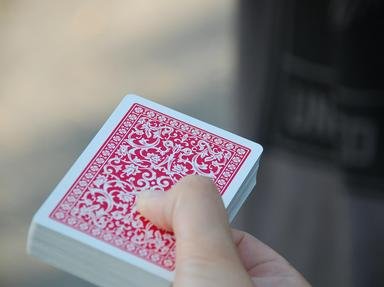Quiz Answer Key and Fun Facts
1. The origin of playing cards is often disputed. However, most do agree that the concept was first developed in the country that invented the paper on which the cards were printed. Which country is this?
2. Before Europeans could enjoy a nice game of poker, the concept of playing cards had to first be introduced to them. In what century was the first documented reference made to playing cards in Europe?
3. As playing cards arrived in Europe, their design began to change. Court cards were altered to depict royal figures. Which card, however, is notably absent from several traditional decks in Italy, Germany, and Switzerland?
4. As the popularity of playing cards increased, they began to be made with more detail and originality. Because of this, for what purpose did they begin to be used for (besides card games)?
5. Sharing their name with the seeds often found inside of an apple, which term describes the symbols/suits depicted on the faces of playing cards?
6. The Anglo-American suits (hearts, diamonds, clubs, and spades) are now generally thought to have evolved from the traditional German suits. However, many in France maintain that the suits were invented by a man named Etienne Vignoles. What was this man's profession?
7. Which of the four French/Anglo-American suits, often associated with material wealth in cartomancy, is linked to the bells suit in Germanic decks and coins in Italo-Spanish decks?
8. One common theme in European playing cards is the association of real life figures with court cards. The Parisian design (which is standard in France) is no different. Which one of these historical figures is NOT associated with a Parisian design court card?
9. One of the most recent additions to the traditional Anglo-American deck of playing cards is the joker. Which card game's name was misinterpreted to give us the name "joker"?
10. The Ace of Spades has come to be seen as the most powerful card in a deck and has been portrayed in several parts of culture and the media. Which nickname for the card has meant that it has gained a strong association with war?
Source: Author
doublemm
This quiz was reviewed by FunTrivia editor
WesleyCrusher before going online.
Any errors found in FunTrivia content are routinely corrected through our feedback system.
